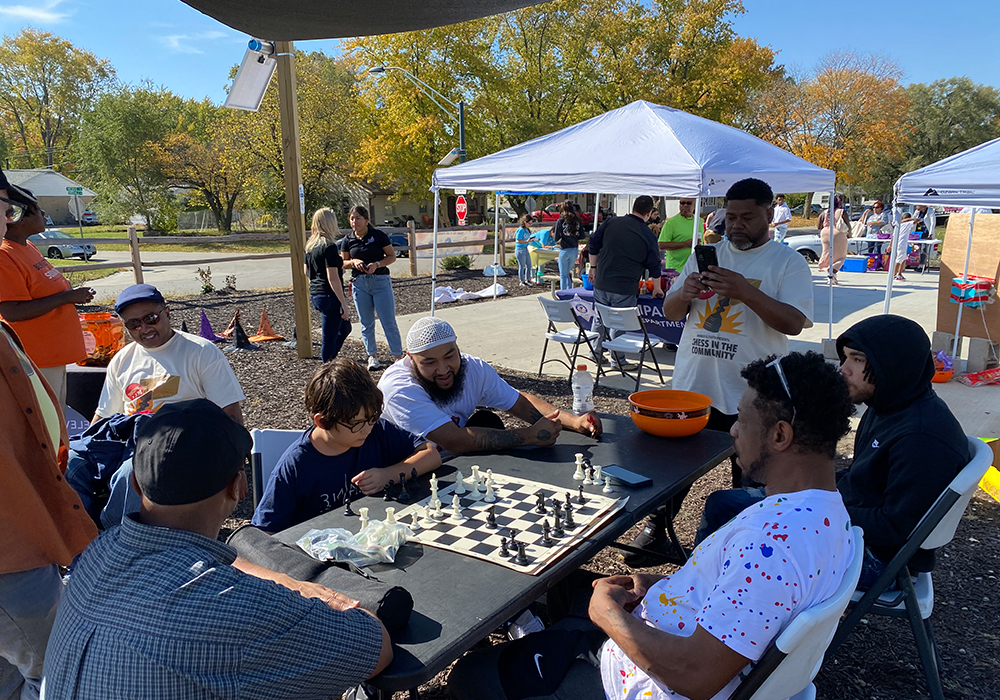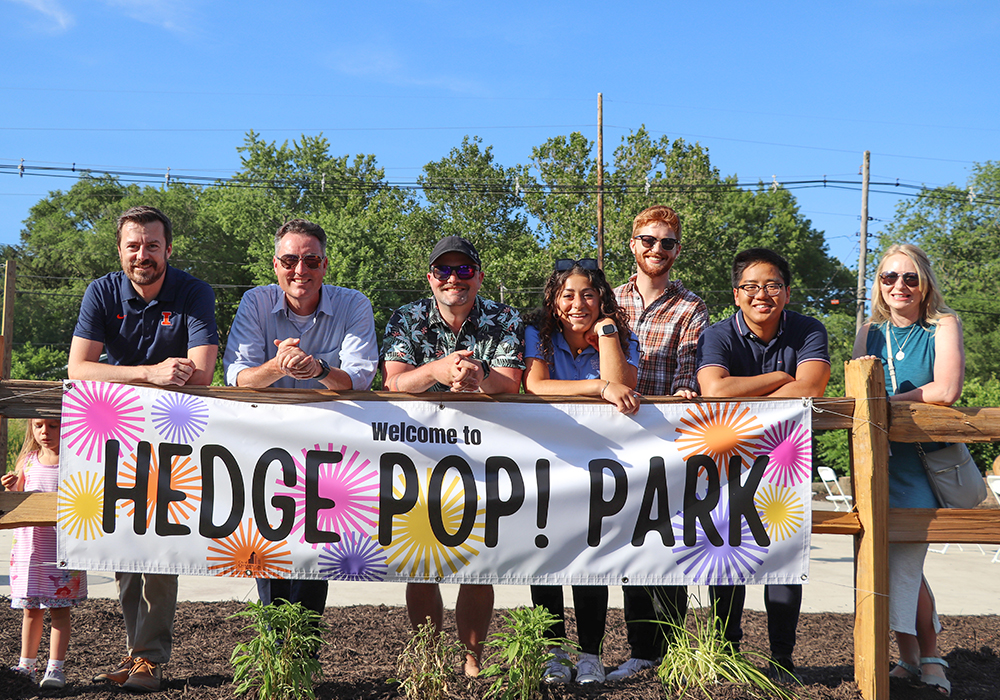Equity In Practice
Building Community Relationships Through Pop Ups

Planners in the City of Champaign, Illinois, have used place-based efforts, with a focus on diversity, equity, and inclusion to build relationships and better understand neighborhood needs in one of the city's most challenged neighborhoods.
The Garden Hills Neighborhood in Champaign is a historically underserved, predominately African-American community in the city's north end, which has also been suffering from high levels of gun violence. Built in the 1950s, the neighborhood also lacks critical infrastructure such as parks, street lighting, and sidewalks, and it suffers from chronic flooding.
With efforts already underway to construct a basin that would solve flooding issues, planners found the opportunity to use some of the land reserved for the basin, before its construction, to engage with residents, particularly the youth, for the Summer of 2022. In just 100 days and with a budget of only $75K, they established the Hedge POP! Park, a one-half acre temporary park built by both city staff and neighborhood residents together.

Hedge POP! Park in Champaign, Illinois. Photo courtesy of the City of Champaign.
Relationship Goals
While building "pop up" parks in historically underserved neighborhoods is growing in popularity in many cities across the nation, what made the Hedge POP! Park effort different was in that the goal was less about building a park and more about relationships between residents and city staff. The Hedge POP! Park simply became the space to build those relationships.
City staff committed to be present in the space twice a week throughout the summer on a predictable and consistent basis to engage with residents and youth. Planners also partnered with the city's Department of Equity and Engagement to bring additional programming to the park to enhance that engagement. This included the Hip Hop Xpress from the University of Illinois which uses STEAM concepts to teach kids to build and race remote-controlled cars.
A group called Chess in the Community was also engaged to regularly attend and teach the concepts of chess relating them to life lessons of patience and critical thinking.
Finally, the Champaign Public Library engaged kids and adults with a program called Mother Goose on the Loose, which provided readings and books for kids.
Most importantly, planners engaged with residents and kids every week to build those relationships and understand first-hand the concerns of the neighborhood. These interactions all provide key input for a neighborhood planning effort underway. New relationships have all provided tangible outcomes and have shown city staff's commitment to being present, listening, understanding, and acting.

Community members learning and playing chess in Hedge POP! Park. Photo courtesy of the City of Champaign, Illinois.

Roya Nassirpour with the City of Champaign engages with youth at the Hedge POP! Park. Photo courtesy of the City of Champaign, Illinois.
Key Takeaways
There are many lessons learned and advice to be shared for other communities looking to embark on a similar effort.
First, start your planning early! Ideally, use the winter months to do your planning, and be ready to build in Spring so your programming can be delivered in Summer and Fall.
Second, be realistic about what can be done with "sweat equity" and what needs to be contracted out. But, include residents in your planning and construction as much as possible.
Finally, there needs to be some sort of budget, even if it's small.
The improvement you provide needs to be meaningful and that means there needs to be some level of resources to make it happen.
What made the Hedge POP? Park a success in Champaign is that the focus remained on people and relationships and not just building a space. You will learn so much more about your residents and their needs when you are WFC, or "Working From Community."

Community members helping in the park. Photo courtesy of the City of Champaign, Illinois.

Members of the city's Department of Planning. Photo courtesy of the City of Champaign, Illinois.
Top image: View of Hedge POP! Park. Photo courtesy of the City of Champaign, Illinois.


